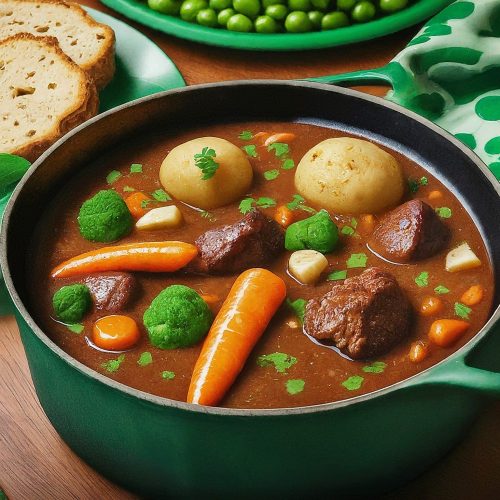
St. Patrick’s Day, celebrated annually on March 17th, is a vibrant cultural and religious holiday with roots deeply entwined with Irish history. This beloved occasion honors the patron saint of Ireland, Saint Patrick, and has evolved into a global celebration of Irish heritage.
Who Was Saint Patrick?
Born in Roman Britain in the late 4th century, Saint Patrick (originally named Maewyn Succat) was kidnapped at 16 and brought to Ireland as a slave. After escaping captivity, he returned to Ireland as a Christian missionary, playing a pivotal role in converting the Irish to Christianity. Many legends surround St. Patrick, including the story that he drove the snakes out of Ireland, and the use of the shamrock to explain the Holy Trinity.
The Origins of St. Patrick’s Day
St. Patrick’s Day was originally a religious feast day in Ireland, observed for over a thousand years. It marked the anniversary of St. Patrick’s death in the 5th century. During the Christian season of Lent, families would attend church in the morning, followed by feasting and merriment in the afternoon – including the lifting of Lenten restrictions on eating meat.
How Did St. Patrick’s Day Become a Global Phenomenon?
Irish immigrants carried St. Patrick’s Day traditions across the globe, particularly to the United States. In fact, the first recorded St. Patrick’s Day parade didn’t occur in Ireland, but in what is now St. Augustine, Florida, in 1601!
During the 19th and 20th centuries, St. Patrick’s Day evolved into a secular celebration of Irish culture, embodying pride in Irish identity both in Ireland and across the worldwide diaspora.
How is St. Patrick’s Day Celebrated Today?
St. Patrick’s Day is renowned for its festive atmosphere and these notable traditions:
- Parades: Vibrant parades featuring marching bands, floats, dancers, and community groups are a hallmark of St. Patrick’s Day festivities in cities worldwide.
- Wearing Green: People don green attire, shamrocks, or even humorous costumes to embrace the spirit of the day.
- Traditional Irish Food and Drink: Dishes like corned beef and cabbage, Irish soda bread, and Guinness beer are staples of St. Patrick’s Day feasts.
- Music and Dance: Lively Irish music and traditional Irish stepdance performances create an infectious energy.
- Céilithe (Irish Social Gatherings): Communities host céilithe, featuring traditional Irish music and dance.
Beyond the Revelry
While St. Patrick’s Day is often associated with lively celebrations, it’s also an opportunity to delve deeper into the rich history of Ireland, learn about Irish folklore and traditions, and appreciate the significant contributions of Irish people to the world.
Article above assisted by Google Gemini Advanced, article below assisted by ChatGPT 4.0.

The History and Celebration of Saint Patrick’s Day: A Comprehensive Guide
Saint Patrick’s Day, celebrated on March 17th, is a cultural and religious holiday commemorating Saint Patrick, the foremost patron saint of Ireland. This day has transcended its religious origins to become a global celebration of Irish culture, with festivities including parades, special foods, music, dancing, and a whole lot of green. In this comprehensive guide, we delve into the history of Saint Patrick’s Day and explore the various ways it is celebrated around the world, making sure to SEO-optimize our article for those curious about this vibrant holiday.
The Origins of Saint Patrick’s Day
Saint Patrick’s Day dates back to the early 17th century, established by the Catholic Church in the early 1600s as a feast day in honor of Saint Patrick, who lived in the 5th century. Contrary to popular belief, Saint Patrick was not Irish by birth. Born in Roman Britain, he was kidnapped and brought to Ireland as a slave at the age of 16. He later escaped, but returned to Ireland as a missionary, playing a significant role in converting the Irish to Christianity.
March 17th, the supposed date of Saint Patrick’s death, has been commemorated as Saint Patrick’s Day since the 9th or 10th century. However, it was only in the 17th century that the day was officially recognized by the church. The day is a public holiday in Ireland and has been celebrated by the Irish diaspora around the world for centuries.
Saint Patrick and the Shamrock
One of the most enduring symbols of Saint Patrick’s Day is the shamrock, a type of clover. Legend has it that Saint Patrick used the three-leaved plant to explain the Holy Trinity to the pagan Irish. This story, whether fact or folklore, has cemented the shamrock as a lasting symbol of the holiday.
Global Celebrations
While Saint Patrick’s Day retains its religious significance in Ireland, complete with church services and prayers, it has also become a day to celebrate Irish culture and heritage, especially in countries with large Irish communities.
- In Ireland: The day is marked by parades, festivals, and the wearing of green attire or shamrocks. It’s a public holiday, with most businesses closing to allow for widespread participation in the festivities.
- In the United States: Saint Patrick’s Day is widely celebrated, with some of the largest and oldest parades taking place in cities like New York, Boston, and Chicago. The Chicago River is famously dyed green in honor of the day.
- Around the World: From the Sydney Opera House to the Great Wall of China, landmarks around the globe are lit up in green on March 17th. Parades, Irish music and dance, and pub crawls are common ways people celebrate, regardless of their ethnic background.
Traditional Foods and Customs
Traditional Irish food takes center stage on Saint Patrick’s Day. Dishes such as corned beef and cabbage, Irish soda bread, and shepherd’s pie are commonly served. In Ireland, people also enjoy eating bacon and cabbage. Drinking plays a significant role in the celebrations, with many indulging in Irish beer, cider, and whiskey. Non-alcoholic options include green milkshakes, tea, and coffee.
Modern Celebrations and Cultural Impact
Today, Saint Patrick’s Day is celebrated by people of all backgrounds, not just those of Irish descent. The holiday serves as a testament to the impact of Irish culture worldwide and promotes a sense of unity and joy. Educational events, storytelling, and music sessions also play a significant role in today’s celebrations, highlighting the rich history and culture of Ireland.
Conclusion
Saint Patrick’s Day is a time of festivity, cultural pride, and remembrance. It honors the patron saint of Ireland while celebrating the country’s heritage and the global influence of the Irish diaspora. Whether you’re attending a parade, enjoying a traditional meal, or simply wearing green, Saint Patrick’s Day offers a unique opportunity to participate in a global celebration of Irish culture.
By understanding the history and traditions of Saint Patrick’s Day, we can more fully appreciate the significance of this global holiday and its ability to bring people together in celebration.








